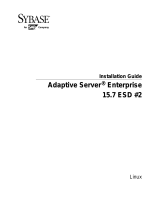Page is loading ...

Configuration Guide for MARBLE M-WEBKEY
The purpose of the guide is a top level outline of the steps taken for configuration of a Vision 3 frame system and a MARBLE
processor running the M-WEBKEY application. The detailed information for each step of installation and configuration are available
in the manuals for Vision 3 and M-WEBKEY and can found on the USB drive included in the system packaging.
Vision Frame System
1. Install the Vision 3 frame. Installation information can be found in section 2 (pages 8-15) of the Vision 3 manual.
2. Configure the Vision 3 frame for network connections. This connection will then be used to configure the MARBLE
processor and M-WEBKEY application. Please see Vision 3 manual section 3 (pages 17-18) for network configuration of the
frame.
3. Make physical connections on the rear module of the MARBLE-V1 processor running the M-WEBKEY application.
For rear modules VR04 and VR07, connect the appropriate signals via BNC for SDI Operation and connect up to 4 x 10GbE
connections for IP operation.
For rear module VR06, connect the appropriate signals via BNC for SDI operation and connect up to 2 x 10GbE connections
for IP operation.
These connections are detailed on page 7 of the M-WEBKEY user manual.
MARBLE-V1 and M-WEBKEY Application
4. You are now ready to configure the M-WEBKEY application and the MARBLE-V1 processor. VisionWeb web browser control
is recommended for the configuration of the MARBLE-V1 software apps. This is achieved by entering the IP address of the
frame into a web browser (10.0.0.201 on Ethernet port 1 of the frame by default). You should now see the Vision 3 home
page and all installed boards in the frame. Select the slot of the M-WEBKEY application to be configured by clicking on it.
5. You will now see the UI for the M-WEBKEY application. For IP operation, select the Ethernet Interfaces menu at the bottom
of the browser window. You will only need to configure the connections needed for your hardware (the number of SFP+
fitted to your hardware) and the connections required for your application (i.e. are protect signals in/out being used). The
instructions for configuring the interfaces are in section 4.1 on page 8 of the M-WEBKEY manual. In addition, M-WEBKEY
utilises an HTML page as key and foreground source. To key external web server content, a DNS server address should be
entered on the Ethernet Interfaces control tab. Up to two addresses can be entered. This is detailed in section 6.1 page 18
of the M-WEBKEY manual.
6. Next, configure the input by selecting the Input menu on the bottom of the browser window. M-WEBKEY is a single input
application for the background signal. Specific instructions on configuring inputs are found in section 4.2, 4.3 and 4.4
(pages 9-11) in the M-WEBKEY manual. For SDI operation, Input configuration is complete once the input is enabled, and
protocol is set to SDI.
7. Once the input is configured, you can check the input status by going to the Status tab inside the Input menu. This is
highlighted in the manual in section 5.1 on page 14. You should see that configured input is present and in the proper
format.
8. Outputs are configured next. Select the Output menu on the bottom of the browser window. There are two outputs in M-
WEBKEY. IP output configuration is covered in section 4.5 on page 12 of the M-WEBKEY manual. For SDI operation, an
output needs to be enabled and SDI selected as the protocol. After outputs are configured, status can be checked in the
status tab of this menu. You should see that outputs are present and in the proper format.
9. Output traffic shaping, if required for IP operation, can now be configured. Detailed instructions on traffic shaping can be
found in section 8, page 26 of the manual.
10. Referencing and output timing should now be configured. Select the References menu at the bottom of the browser
window. Reference configuration is covered in section 7 of the manual starting on page 22.
11. The MARBLE-V1 processor should now be configured for input/output operation. The keyer operation is next. Select the
Keyer menu at the bottom of the browser window. Operation is outlined in section 6 of the M-WEBKEY manual beginning
on page 18.
12. The mixer operation for fading the key up and down is outlined on page 20 of the manual.
Detailed installation and configuration information is provided in the product manuals. For installation and operation
questions please email support@crystalvision.tv
/

